Download the full report - Human Rights Watch
Download the full report - Human Rights Watch
Download the full report - Human Rights Watch
You also want an ePaper? Increase the reach of your titles
YUMPU automatically turns print PDFs into web optimized ePapers that Google loves.
The Sri Lankan government declared victory over <strong>the</strong> LTTE on May 18, 2009. Virtually all of<br />
<strong>the</strong> LTTE’s military leaders and many of its political leaders were killed in <strong>the</strong> final days of<br />
<strong>the</strong> fighting, under circumstances that remain unclear. The government’s refusal to allow<br />
any independent observers into <strong>the</strong> conflict zone or to talk to people who fled <strong>the</strong> conflict<br />
zone makes it impossible to establish conclusively <strong>the</strong> number of casualties. 9 The Panel of<br />
Experts appointed by UN Secretary-General Ban Ki-moon later <strong>report</strong>ed that up to 40,000<br />
civilians died in <strong>the</strong> final months of <strong>the</strong> war. 10<br />
Internal Displacement and Detention Camps<br />
During <strong>the</strong> final months of fighting, some 300,000 Tamil civilians behind <strong>the</strong> narrowing<br />
LTTE lines sought to escape death from starvation, disease, and constant shelling by<br />
escaping to safety in government-controlled areas. While most were blocked by LTTE forces<br />
that used firearms to prevent <strong>the</strong>ir escape, many managed to flee in small groups. A<br />
massive exodus of tens of thousands occurred after <strong>the</strong> Sri Lankan forces broke through<br />
<strong>the</strong> LTTE defense fortifications in <strong>the</strong> eastern coastal town of Mullaithivu on April 20, 2009.<br />
Most of <strong>the</strong> rest did not escape <strong>the</strong> fighting until <strong>the</strong> final collapse of LTTE forces a month<br />
later. According to <strong>the</strong> United Nations, 290,000 people crossed over to governmentcontrolled<br />
areas from <strong>the</strong> conflict zone between October 27, 2008, and June 1, 2009. 11<br />
Government security forces screened and registered those fleeing <strong>the</strong> war zone at several<br />
checkpoints before transporting <strong>the</strong>m to detention camps in <strong>the</strong> north, which <strong>the</strong><br />
government euphemistically called “welfare centers.” The largest was <strong>the</strong> multi-camp<br />
Menik Farm in Vavuniya district.<br />
Both at checkpoints and in <strong>the</strong> camps, <strong>the</strong> authorities separated certain individuals from<br />
<strong>the</strong>ir families—presumably because of alleged ties to <strong>the</strong> LTTE—and sent <strong>the</strong>m to<br />
“rehabilitation centers” established for alleged LTEE suspects. Relatives were often not<br />
informed of <strong>the</strong> whereabouts of <strong>the</strong>se detainees, and domestic human rights organizations<br />
9<br />
For a detailed account of <strong>the</strong> final months of <strong>the</strong> fighting and abuses by both sides, see University Teachers<br />
for <strong>Human</strong> <strong>Rights</strong> (Jaffna), “Let Them Speak: Truth about Sri Lanka's Victims of War,” December 13, 2009,<br />
http://uthr.org/SpecialReports/Special%20rep34/Uthr-sp.rp34.htm (accessed January 2, 2012).<br />
10<br />
UN Secretary General, Report of <strong>the</strong> Secretary-General’s Panel of Experts on Accountability in Sri Lanka (UN<br />
Panel Report), March 31, 2011, http://www.un.org/News/dh/infocus/Sri_Lanka/POE_Report_Full.pdf<br />
(accessed January 3, 2013).<br />
11<br />
Ibid.<br />
“WE WILL TEACH YOU A LESSON” 14



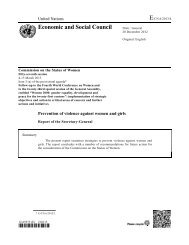
![IANSA [PDF, 2MB] - PeaceWomen](https://img.yumpu.com/25206379/1/190x123/iansa-pdf-2mb-peacewomen.jpg?quality=85)
![Commitments Sample [PDF, 93KB] - PeaceWomen](https://img.yumpu.com/25206331/1/190x245/commitments-sample-pdf-93kb-peacewomen.jpg?quality=85)


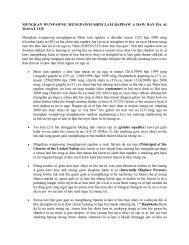
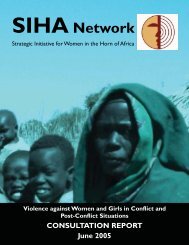
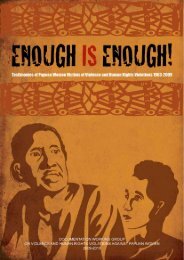


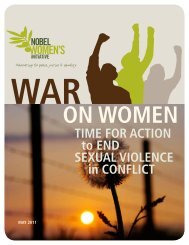
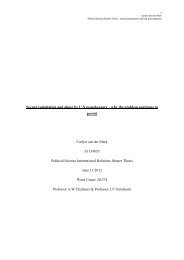

![A Toolkit for Advocacy and Action [PDF, 260KB] - Peace Women](https://img.yumpu.com/25205989/1/190x245/a-toolkit-for-advocacy-and-action-pdf-260kb-peace-women.jpg?quality=85)